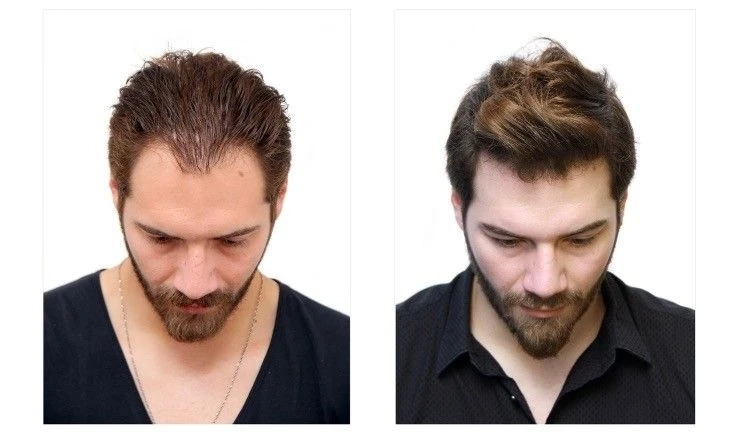Hair transplantation is a minimally invasive procedure that involves utilizing one's own hair follicles to cover the desired bald area. The process entails extracting hair grafts from a specific donor area and then implanting them in the bald area, resulting in permanent hair growth. The procedure is elective, allowing patients to undergo it at their convenience without rushing into it as an emergency. However, not everyone is eligible for the procedure, as certain terms and conditions must be evaluated during the initial consultation to determine the suitability of the patients. Therefore, planning to undergo the procedure overnight is not possible, and a consultation before the procedure is a necessary step that cannot be skipped. Many international patients have shown interest in hair transplant in India, with a virtual consultation being arranged before the final in-person consultation to confirm the procedure's feasibility. The hair transplant cost in India has significantly decreased, with several renowned hair transplant clinics offering excellent world-class services, attracting people from around the globe for hair transplant tourism.
Medispa hair transplant clinic is a renowned establishment known for its exceptional facilities and remarkable hair transplant outcomes. We stand out as a top-tier hair transplant clinic globally, meeting international benchmarks and completing numerous successful hair transplant procedures. Dr. Suneet Soni, the founder of Medispa Hair Transplant, is acknowledged as a leading hair transplant surgeon worldwide, receiving accolades from both international and national bodies for his significant advancements in the field of hair restoration. His expertise in creating flawless and natural-looking hairlines has earned him the title of "master of artistic skills."
Hair transplant procedure
The hair transplant surgery necessitates the careful extraction of hair follicles from the donor area, which are subsequently implanted in the designated bald spot. To ensure long-lasting results, it is crucial to select hair follicles that are either permanent or resistant to DHT after the transplant procedure.
Patients have the option of undergoing an advanced elective hair transplant procedure at any stage of hair loss. However, before proceeding with the treatment, certain criteria and conditions need to be verified to confirm its feasibility.
What occurs during a consultation?
During a consultation, the hair transplant surgeon will provide you with a detailed explanation of the procedure and address any concerns or questions you may have about the hair transplant. The scalp assessment is conducted thoroughly during the consultation to gather information about specific aspects related to the hair transplant. Additionally, during the consultation, you will receive information about the cost of the procedure, which the surgeon determines after carefully evaluating the scalp and considering the patient's requirements. Therefore, it is evident that planning a hair transplant cannot be done hastily, as it requires careful consideration and preparation beforehand.
Why is scalp assessment necessary for the hair transplant procedure?
It is imperative to undergo a scalp assessment before considering a hair transplant procedure, as this step is crucial in determining the feasibility of the surgery. During the primary consultation, the hair transplant surgeon will assess the scalp thoroughly and gather relevant medical history to ensure that the patient is a suitable candidate for the procedure.
Assess the feasibility of the hair transplant procedure: It is essential to select a skilled surgeon who can accurately assess the feasibility of the surgery to achieve satisfactory results. Additionally, the scalp assessment helps in identifying the cause of hair loss through lab investigations and densitometer assessments. Furthermore, microscopic examination of the scalp can reveal any underlying pathology, and if necessary, a scalp biopsy may be performed to rule out any inflammation.Determining the hair density can be identified with scalp assessment: In order to determine the hair density at the donor area, it is crucial to undergo a hair transplant. The hair transplant surgeon carefully evaluates the donor area on the scalp to determine the adequacy of hair density in the back and sides of the head. If the density is not sufficient, other areas of the body may be considered as potential donor areas.Extend of baldness can be estimated: The extent of baldness is determined by examining the scalp and using the Norwood grading system to classify the bald areas.Number of hair grafts needed to be harvested: The hair transplant surgeon thoroughly examines the donor area to determine the number of hair grafts that can be harvested for the procedure. This decision is made with caution to avoid over-harvesting the donor area and violating the safer zones.The estimated cost can be determined: After assessing various aspects of the hair transplant, such as the number of hair grafts needed, the cost of the procedure specific to the patient is determined. This is based on a comprehensive evaluation of the scalp.Determination of technique to perform hair transplant can be identified:The hair transplant technique is determined after evaluating the scalp and determining the required number of hair grafts during the initial consultation. In cases where a larger number of hair grafts are needed and in the early stages of baldness, the FUT technique is recommended. On the other hand, for facial hair transplant, the FUE technique can be a viable choice.

